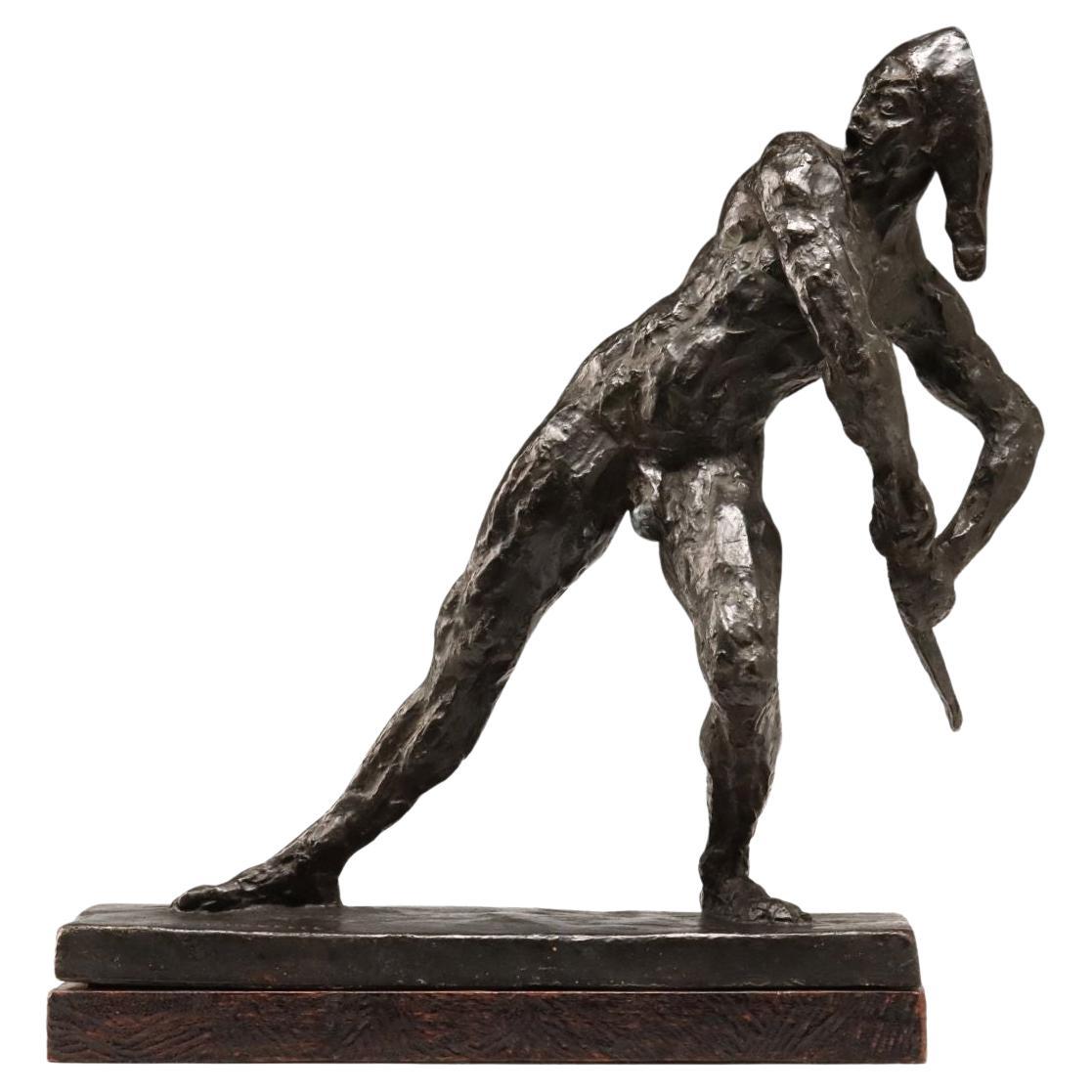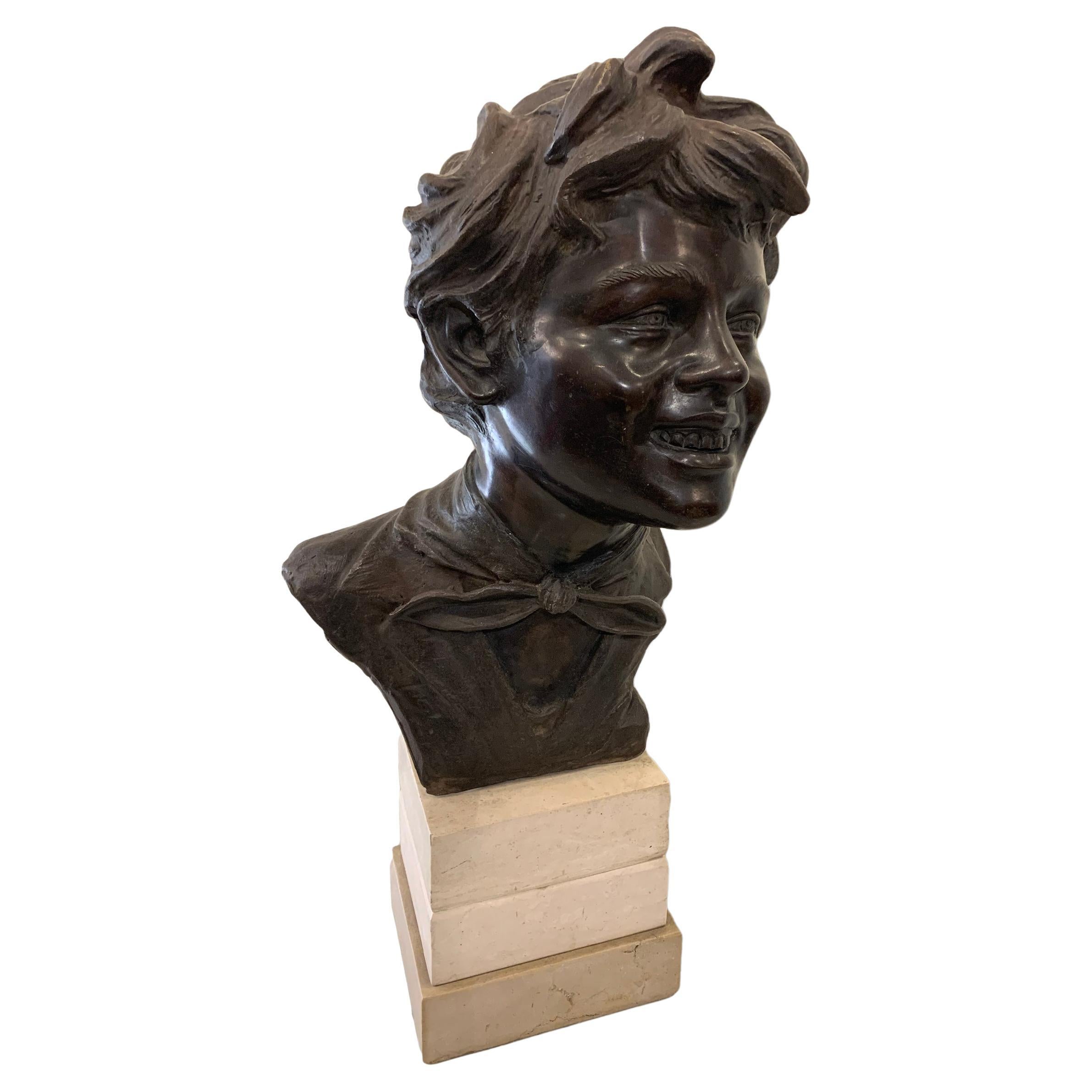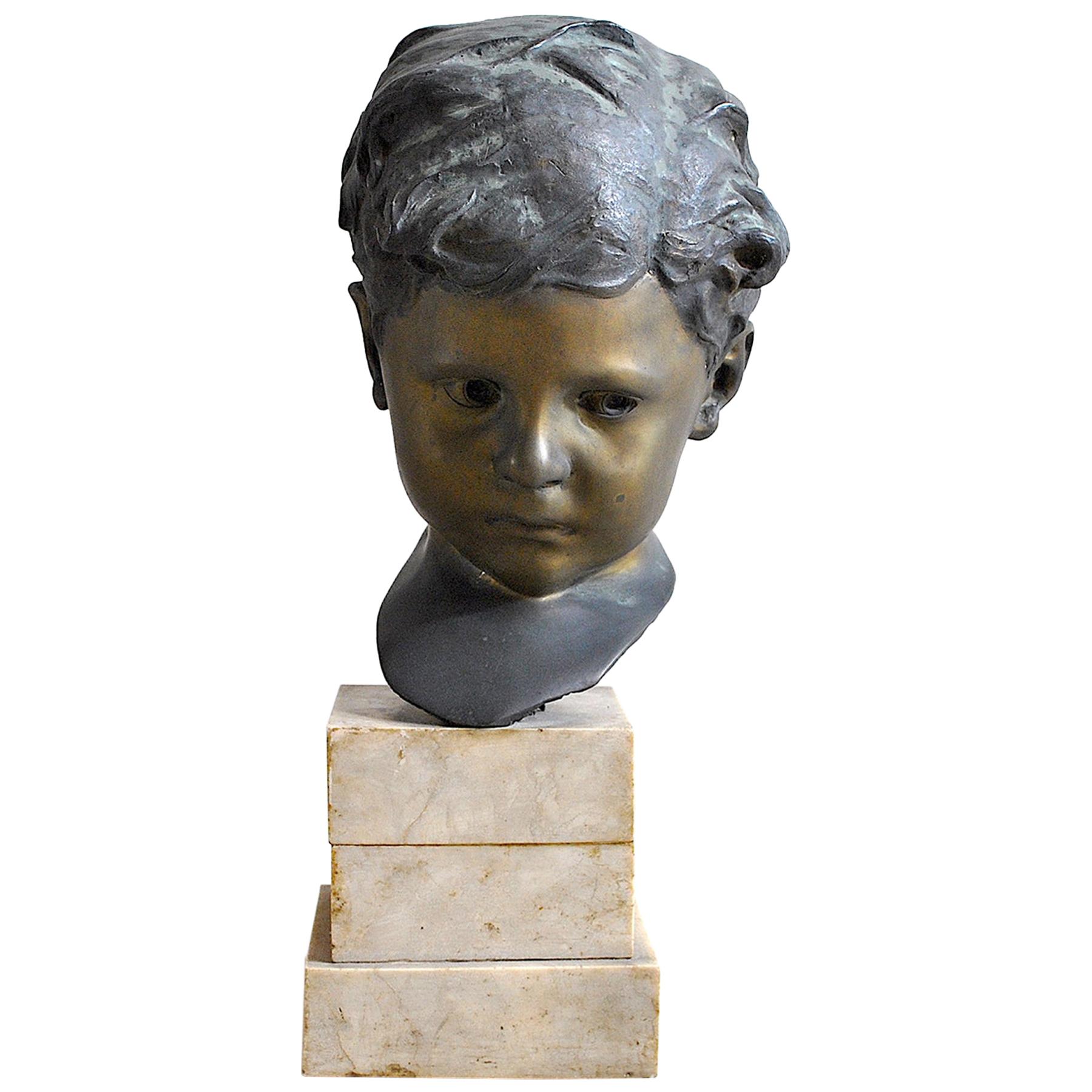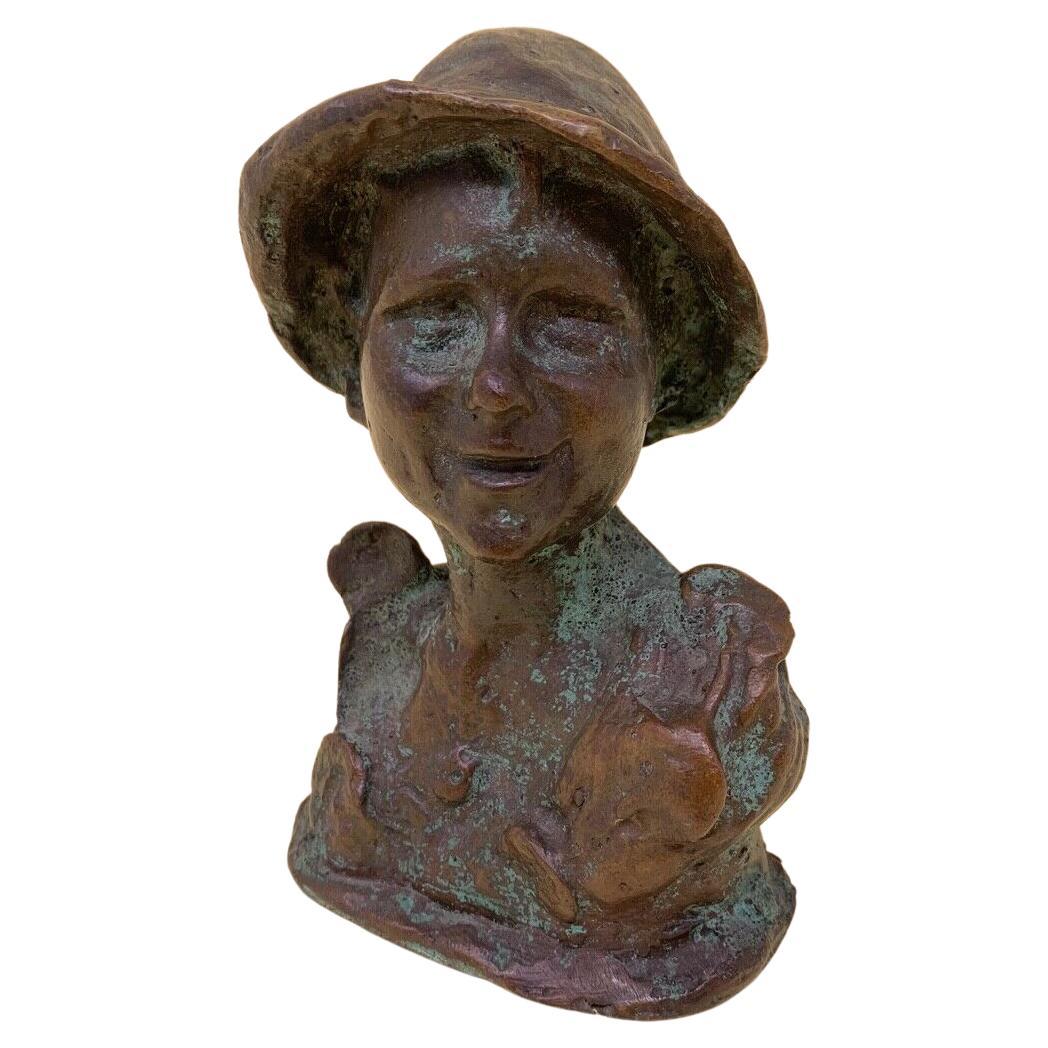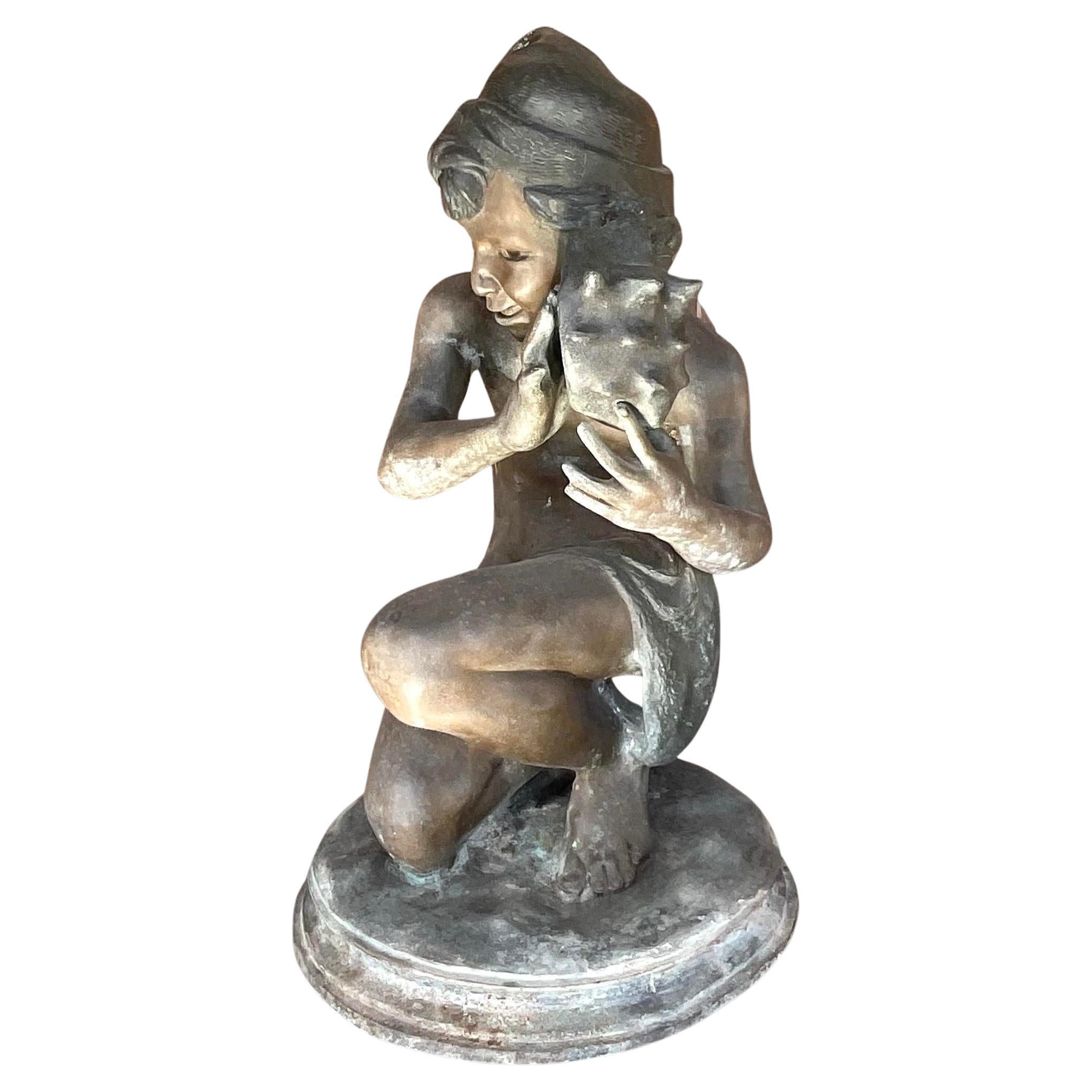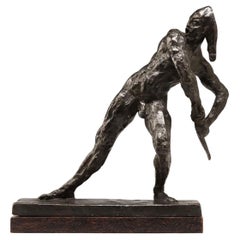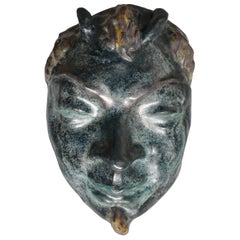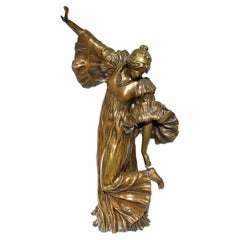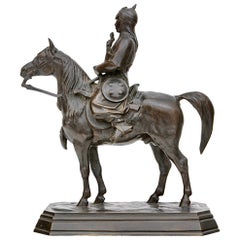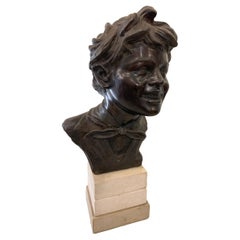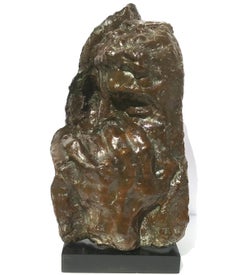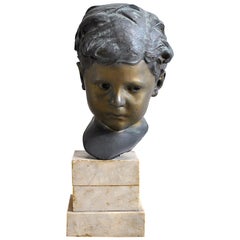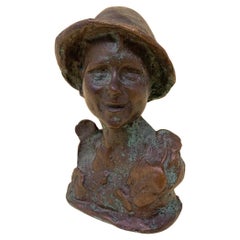Items Similar to Emile Antoine Bourdelle Enfan
Want more images or videos?
Request additional images or videos from the seller
1 of 10
Emile Antoine Bourdelle Enfan
$18,000
£13,956.67
€15,828.89
CA$25,802.23
A$28,060.51
CHF 14,782.90
MX$340,800.16
NOK 185,850.94
SEK 174,220.24
DKK 118,838.77
About the Item
Emile Antoine Bourdelle (French, 1861-1929) Bronze Sculpture
Bronze brutalist bust titled Enfant Riant (Laughing Child) Most probably modeled by his daughter; Rhodia. Bourdelle was a dark brutalist sculptor ; yet this rare bronze depicts a smiling little girl which only a father’s soft heart could have for their daughter. A very moving figurative sculpture!
Provenance: 1970 letter and expertise statement by Mme Rhodia Dufet Bourdelle; daughter of Antoine Bourdelle. Along with original documentation confirming authenticity by a letter dated 27th May, 1970 by Christina Brash of Grasvenor Gallery.
The bronze is signed, stamped with Bourdelle’s monogram along with the
Foundry: Vasuani Cire Perdue..
Dimensions: 14.5 X 12 X 9 inches
Condition: Good overall condition with normal aged patina. Displays some verdigris and surface wear consistent with age.
Son of a cabinetmaker, Émile Antoine Bourdelle was born in Montauban (Tarn-et-Garonne). He studied at the École des Beaux-arts de Toulouse and then joined the studio of sculptor Alexandre Falguière at the École de Beaux-arts de Paris. He settled in Montparnasse, at 16 impasse du Maine (now the Bourdelle Museum). He lived and worked in this city of artists for over 40 years. Herakles the Archer was a great success at the Salon de la Société nationale des beaux-arts in 1910. The work constitutes a manifesto of modern sculpture. Bourdelle found his personal path, marked by a sense of construction and synthetic forms (Head of Apollo, Penelope).
In 1910-1913, Bourdelle created the bas-reliefs for the façade of the Théâtre des Champs-Élysées as well as the interior frescoes.
Bourdelle taught for 20 years at the Grande-Chaumière Academy and in its workshops. He trained more than 500 students from all over the world.
From 1919, he received major monumental commissions throughout his life.
Bourdelle died in Le Vésinet in 1929.
AVANTIQUES is dedicated to providing an exclusive curated collection of Fine Arts, Paintings, Bronzes, Asian treasures, Art Glass and Antiques. Our inventory represents time-tested investment quality items with everlasting decorative beauty. We look forward to your business and appreciate any reasonable offers. All of our curated items are vetted and guaranteed authentic and as described. Avantiques only deals in original antiques and never reproductions. We stand behind our treasures with a full money back return policy if the items are not as described.
- Creator:Émile Antoine Bourdelle (Artist)
- Dimensions:Height: 14.5 in (36.83 cm)Width: 12 in (30.48 cm)Depth: 9 in (22.86 cm)
- Materials and Techniques:
- Place of Origin:
- Period:1910-1919
- Date of Manufacture:1910
- Condition:Wear consistent with age and use.
- Seller Location:Dallas, TX
- Reference Number:1stDibs: LU1774244084622
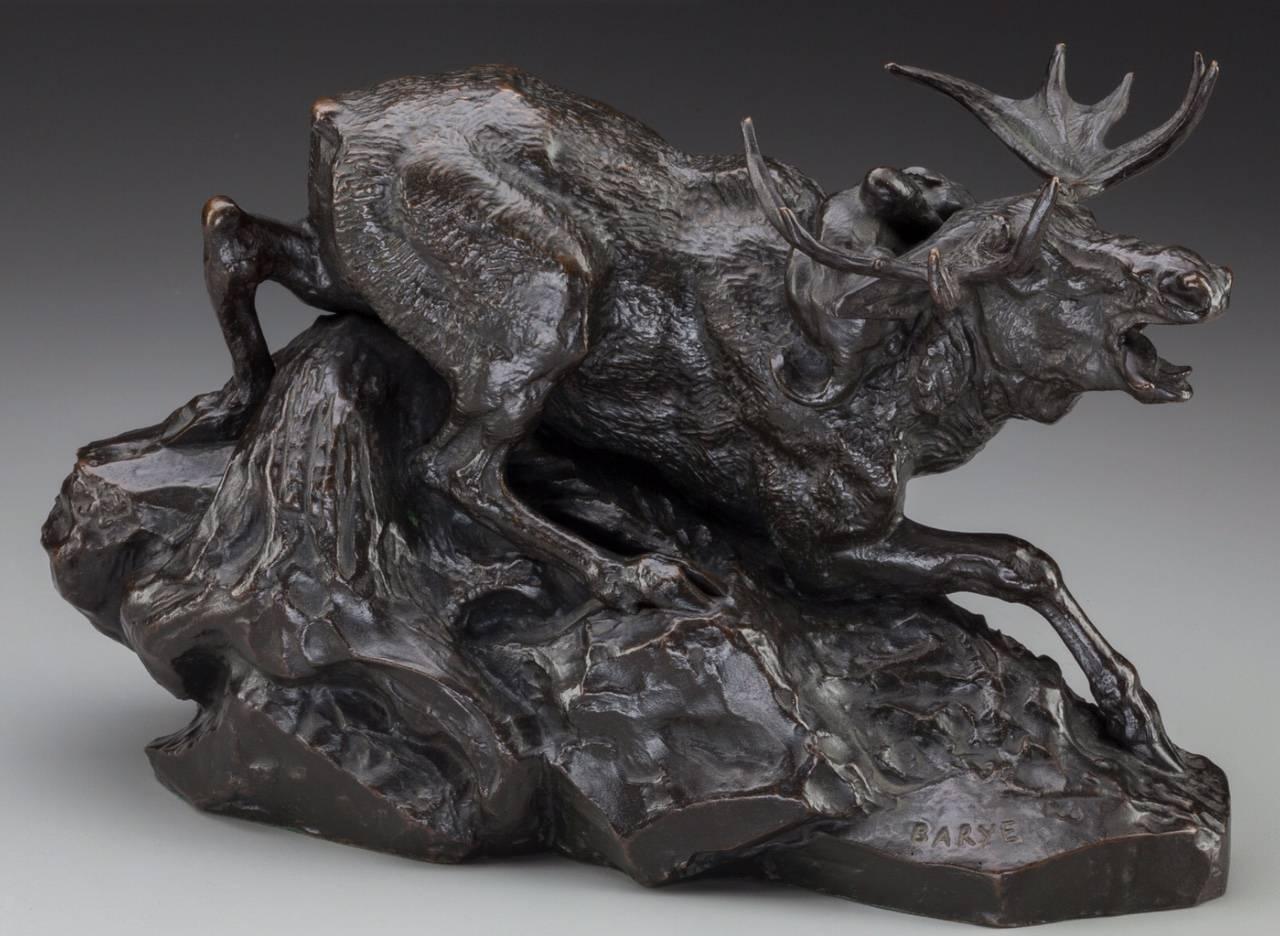
About the Seller
4.9
Gold Seller
Premium sellers maintaining a 4.3+ rating and 24-hour response times
Established in 2000
1stDibs seller since 2015
451 sales on 1stDibs
Typical response time: 2 hours
- ShippingRetrieving quote...Shipping from: Dallas, TX
- Return Policy
Authenticity Guarantee
In the unlikely event there’s an issue with an item’s authenticity, contact us within 1 year for a full refund. DetailsMoney-Back Guarantee
If your item is not as described, is damaged in transit, or does not arrive, contact us within 7 days for a full refund. Details24-Hour Cancellation
You have a 24-hour grace period in which to reconsider your purchase, with no questions asked.Vetted Professional Sellers
Our world-class sellers must adhere to strict standards for service and quality, maintaining the integrity of our listings.Price-Match Guarantee
If you find that a seller listed the same item for a lower price elsewhere, we’ll match it.Trusted Global Delivery
Our best-in-class carrier network provides specialized shipping options worldwide, including custom delivery.More From This Seller
View AllEmile Antoine Bourdelle “Arlequin” Bronze Sculpture Valsuani Foundry
By Émile Antoine Bourdelle
Located in Dallas, TX
Emile Antoine Bourdelle (French, 1861-1929) Bronze Sculpture
L' Arlequin.
Conceived in 1905 and cast around 1954
A rare museum quality impressionist - Brutalist interpretation of a harlequin swordsman in bronze with black/brown patina.
Bears the cast signature E. A. BOURDELLE top of the base, © by Bourdelle along one side.
Foundry seal of A. VALSUANI CIRE PERDUE. On corner.
Measures 16 x 16.5 x 5 inches.
Very good condition throughout, no damage, repair or heavy wear. Scratches and wear to patina throughout commensurate of material age and use.
Provenance: The estate of Morton and Estelle Sosland.In Kansas City, the Sosland family name is synonymous with both giving, and the arts. Of their many contributions to the community, 'The Soslands gave one of the nation's finest private collections of American Indian art to the Nelson-Atkins' museum. The content of this auction bears testament to their keen eye and varied interests.
In September 1893 Bourdelle joined the studio of Auguste Rodin. His collaboration with Rodin lasted fifteen years. In 1895, he received his first official commission, a war monument for the city of Montauban. His proposed plans, different from traditional monuments, created a scandal. Rodin intervened on his behalf, and the monument was finally erected in 1902.
In 1900, Bourdelle demonstrated his independence from Rodin's style with a bust of Apollo. In the same year, Bourdelle, Rodin and the sculptor Desbois opened a free school of sculpture, the Institut Rodin-Debois-Bourdelle. One of the students was Henri Matisse, who later produced some remarkable sculpture, but the school did not last long.
Bourdelle in his studio sketching Grace Christie
In 1905, Bourdelle had his first personal exhibition, in the gallery of the foundry-owner Hébrand. With the support of Hébrand and the material assistance of his foundry, Bourdelle was able to make larger works and earn greater recognition. His father died in 1906, and Bourdelle changed his first name to simply Antoine, after his father. He married his second wife, Cléopatre Sevastos (1892-1972), who was of Greek origin. She and their daughter, Rhodia, became a frequent inspiration for his works.[6]
In 1908, Bourdelle left the studio of Rodin and set out on his own. In 1909 he exhibited a new work, Hercules the Archer at the annual Salon of the Societé Nationale des Beaux-Arts. He began to teach at the Académie de la Grande Chaumière, where his students included Giacometti, Isaac Frenkel and Adaline Kent...
Category
Vintage 1940s French Brutalist Figurative Sculptures
Materials
Bronze
Francois Emile Decorchemont Pate De Verre Mask of Pan
By Francois Decorchemont
Located in Dallas, TX
A rare and large pate de verre molded sculpture of the mythological God Pan. Very thick and heavy; this glass piece is primarily bluish green with yellow, reds and orange. The likeness is uncanny with perfectly modeled facial features and traces of his goat horns. This piece was said to exhibit at the Brooklyn Museum in 1971 but there is no documentation. The mask is stamped Decorchemont on his right cheek. For serious collectors of Art Deco - Art Nouveau rare and beautiful glass, circa 1915.
Measures: Height: 7.75 inches (19.75 cm)
Width: 5 inches (12.8 cm)
AVANTIQUES is dedicated to providing an exclusive curated collection of Fine Arts, Paintings, Bronzes, Asian treasures, Art Glass and Antiques. Our inventory represents time-tested investment quality items with everlasting decorative beauty. We look forward to your business and appreciate any reasonable offers. All of our curated items are vetted and guaranteed authentic and as described. Avantiques only deals in original antiques and never reproductions. We stand behind our treasures with a full money back return if the items are not as described.
François-Emile Décorchemont...
Category
Vintage 1910s French Art Deco Figurative Sculptures
Materials
Art Glass
Agathon Leonard (Fr 1841-1923 Danseuse Au Cothurne
By Agathon Léonard
Located in Dallas, TX
AGATHON LÉONARD (FRENCH, 1841-1923) Danseuse au Cothurne
Signed 'A Léonard' (on reverse) with Susse Frères foundry cachet, further stamped 'M'
Gilt Bronze, light brown patina
21 i...
Category
Antique Early 1900s French Art Nouveau Figurative Sculptures
Materials
Bronze
Antoine-Louis Barye (French, 1796-1875) Guerrier du Caucase Bronze Figure
By Antoine-Louis Barye
Located in Dallas, TX
Antoine-Louis Barye (French, 1796-1875) "Guerrier du Caucase" cast bronze sculpture depicting a Caucasian warrior in full armor rendered in fine detail riding on his horse.
Cast ci...
Category
Antique 1870s French Beaux Arts Figurative Sculptures
Materials
Bronze
Francois Raoul Larche (1860-1912) LA SEVE or Métamorphose de Daphné
By François-Raoul Larche
Located in Dallas, TX
Francois Raoul Larche (1860-1912) LA SEVE or Métamorphose de Daphné Gilt Bronze Art Nouveau Sculpture
Cast, Gilt Bronze or Marble base
France, c. 1900,
Signed "Raoul Larche," number...
Category
Antique Early 1900s French Art Nouveau Figurative Sculptures
Materials
Bronze
Francoise Emile Decorchemont Pate De Verre Mold of a Woman’s Face
By Francois Decorchemont
Located in Dallas, TX
François-Emile Decorchemont Pate-de-Verre Glass Mold Of A Female Ladies Face. A rare, large and very heavy sculpture of either a mask or a modeled face. At 3.5 inches thick in glass with a peach, pink or rose color; this statue was exhibited in the Brooklyn Museum, New York in 1971. With much research; I haven’t seen or heard of a similar form by Decorchemont. The original Brooklyn Museum loan sticker is on verso with the Decorchemont stamp on her left cheek. For serious collectors or rare Art Deco, Art Nouveau glass.
Circa 1910
Molded Signature DECORCHEMONT
Height: 7 Inches (13.3 cm)
Width:. 5.2 Inches (16.5cm).
AVANTIQUES is dedicated to providing an exclusive curated collection of Fine Arts, Paintings, Bronzes, Asian treasures, Art Glass and Antiques. Our inventory represents time-tested investment quality items with everlasting decorative beauty. We look forward to your business and appreciate any reasonable offers. All of our curated items are vetted and guaranteed authentic and as described. Avantiques only deals in original antiques and never reproductions. We stand behind our treasures with a full money back return if the items are not as described.
François-Emile Décorchemont French, 1880-1997
François Décorchemont, originally an accomplished painter and potter of recognized ability, turned to the making of glass in 1904. Pâté de verre was the medium in which he excelled and for which he is best known. After studying decorative art in Paris, François Décorchemont returned to his native Conches in 1910 to develop new techniques in stained glass, particularly in the use of crystal to give multicolored and faceted panes. After 1909, while continuing to produce fine glass paste pieces, Francois Decorchemont began to experiment with a new casting technique. François Decorchemont, Emile's son and also an artist, helped out in his father’s studio, in particular helping him to research the possibilities of creating jeweled adornments in pates d'email (enamel pastes) for Gerome's polychrome sculptural creations.
Francois Décorchemont, a potter and painter at the outset of his career, became fascinated with the IDEA of developing and utilizing a thin translucent glass material in his work. It was in essence the revival and an adaptation of a long forgotten Egyptian glass-making process using colored crystal powdered glass, metallic oxides and an adhesive paste. This "new" material, known as pâte de verre was developed around the turn of the century, principally at the Sevres porcelain factory, by a number of artists working there, notably Henri Cros and Albert Dammouse.
The end of the 19th century was an illuminated period in the history of art. Impressionist painting appeared and created an interest in glass as material. Traditional sculpting materials such as bronze and marble made way for glass with its possibilities of light and color. Henry Cros and François Décorchemont became the leaders of French pâte de verre and facilitated the proliferation of this colorful glass. His first major work, in 1934, was inn the Eglise Sainte-Odile near Porte Champerret in Paris, some 300 square meters of brilliant colors. After the war, he devoted his work to churches in the Eure, including of course Beuzeville where, thanks to the generosity of the local council, the church is lit at night so that his work can be admired from outside. During the first half of the 20th century a number of French artists became famous for their work in pâte de verre, and Francois Decorchemont among them. March 2014, 20th Century’s Greatest Art Dealer Felix Marcilhac’s Collection Privee at Sotheby’s - Chang Yi Entrusts Antoine Leperlier in the Bidding of a Francois Decorchemon's Original. It has been reported that Felix Marcilhac’s Collection Privee auction at Sotheby’s brought in 33,125 Euros (28,000 RMB), three times the estimated price. Marcilhac is considered the greatest Art Deco dealer...
Category
Vintage 1910s French Art Deco Figurative Sculptures
Materials
Art Glass
You May Also Like
Early 20th Century, V. Cinque Bronze Sculpture 'Scugnizzo'
Located in Firenze, FI
Beautiful lost wax cast bronze sculpture on a white marble base. It is signed by V. Cinque (1852-1929), part of the Neapolitan school of the early 1900s.
It depicts the classic Ne...
Category
Early 20th Century Italian Busts
Materials
Carrara Marble, Bronze
Brutalist Bronze Sculpture “La Nuit De Profil”
By Émile Antoine Bourdelle
Located in Dallas, TX
EMILE-ANTOINE BOURDELLE (French, 1861 - 1929).
La Nuit de profil (The Night in profile)
Conceived 1900-1904
Cast 1972
Patinated bronze
Interior signature "BY BOURDELLE."
Foundry st...
Category
Early 1900s Abstract Expressionist Figurative Sculptures
Materials
Bronze
Bronze Casting from the 1930s Giovanni De Martino
By Giovanni De Martino
Located in bari, IT
De Martino is a classical artist, known for the production of sculptures of small bronze busts, in particular (“scugnizzi”, fishermen, commoners) with realistic features.
He trained at the Academy of Fine Arts in Naples under the guidance of Stanislao Nome, Gioacchino Toma, and Achille D ’Orsi, from whom he learned the ability to portray the most realistic details using them on very young subjects. Very young he moved to Paris where he performed small sculptural groups, exhibiting frequently at the "Paris Salon" where he won the prize of the Louvre Museum for the bronze work Le Pêcheur de criquets (The Fisher of locusts, Naples, private collection).
Returning to Naples, he returned to a socialist realism and produced sculptures depicting characteristic Neapolitan types, especially urchins, “street urchins”, little boys and young fishermen. From 1916-1931 he was master of the sculptor Angelo Frattini.
Later the dominant theme of his production was childhood, in particular thoughtful, sad, gaunt children were represented in his works, on whose faces the signs of abandonment and suffering emerged. De Martino became known with the nickname of “The sculptor of children”.
Category
Vintage 1930s Italian Other Figurative Sculptures
Materials
Bronze
$757 Sale Price
20% Off
Scultura Bronzo Scugnizzo Napoletano, Vincenzo Gemito, XIX-XX Secolo
Located in Milano, MI
Scultura Bronzo Vincenzo Gemito Scugnizzo Napoletano
Descrizione:
Meravigliosa Scultura mezza busto in bronzo raffigurante uno scugnizzo napoletano...
Category
Early 20th Century European Figurative Sculptures
Materials
Bronze
Vintage Patinated Bronze Jean-Baptiste Carpeau Sculpture
Located in West Palm Beach, FL
A fabulous vintage Coastal sculpture of young man with shell. Done by the iconic Jean- Baptist Carpeaux. A bronze figure with a beautiful patina from...
Category
Antique Late 19th Century French Figurative Sculptures
Materials
Bronze
20th Century Bronze Painted Terracotta Italian Child Bust Sculpture, 1920s
Located in Vicoforte, Piedmont
Italian terracotta sculpture from the first half of the 20th century. Finely chiseled work in bronze painted terracotta depicting the bust of a child. Beautifully sized and pleasantl...
Category
Vintage 1920s Italian Figurative Sculptures
Materials
Pottery
More Ways To Browse
Fabrication Francaise
Felguerez Sculpture
Figurines Hungary
Gaston Bronze
German Antique Bronze Sculptures
German Male Nude
Grand Tour Narcissus
Guillemin Bronze Sculpture
Keramos Austria
Lapis Lazuli Figure
Lladro Guest
Madonna Statues
Meissen Child
Metal African Sculpture
Mexican Terracotta Sculpture
Nude Pottery
Pre Columbian Terracotta
Roman Soldier Sculpture
